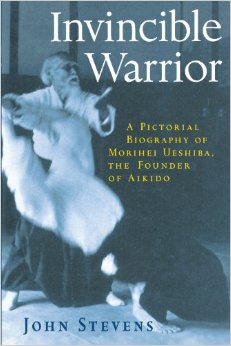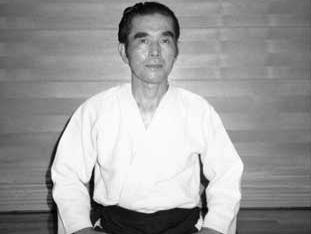
“A Life in Aikido” is the 2008 translation of Kisshomaru Doshu’s “Founder of Aikido,” published originally in 1977. It provides the most detail about O’sensei’s life. It has to be read closely or multiple times to get all of the good stuff. Stanley Pranin has the original version translated on Aikido Journal. Interestingly the two versions do have slight diferences, the new version’s language and descriptions are more polished which may convey a more “sanitized version” of history, mostly specific to O’sensei’s negative experience of war. I will note the differences below within my “highlights:”
O’sensei was a sickly child who was not deeply interested in the martial arts until he saw his father have to defend against a group of “hoolagins” The new version speaks of his father resorting to self-defense, the older version is translated to resorting to “fists.”
Originally the techniques were “scary” and students were amazed their arms weren’t torn off but O’sensei moved towards a way of executing techniques with less potential for harm.
O’sensei stood up to fight for many causes throughout his life before focusing on Aikido. First politics, then war, community development, religion, and lastly peace.
War was devastating to O’sensei, returning from battle he struggled with his mental and physical health. All of the Bio’s include this but the 1977 “Founder of Aikido” comes from the perspective of Kisshomaru as a little boy seeing his father struggle with anger, depression, and isolation, described as having “fretful outbursts,” struggling with “inner anguish” and an almost “manic depressive state.” O’sensei’s father’s answer was Judo.
Aikido is not referred to anywhere as “the art of peace” that seems to be from John Stevens but O’sensei referred to Aikido as “Divine Love” and that it is not an accident that Aiki written with different characters means “love spirit.”
O’sensei said you cant understand Aikido through words, only practice. Practice must develop in three ways body, spirit, and most importantly “nen” or the feeling/intention.

Stevens book hits all the major points without all the details. The strength of the book is the amazing photos that comprise the last 2/3rds of the book. Highlights you don’t see elsewhere are:
Misogi practices come from Bonji Kawatsura who founded a Shinto Misogi school which are now a part of many dojo’s warm ups.
O’sensei considered one of his failures to include hurting a student who was resisting a technique, he said that caused him to change techniques to allow escape without injury so no one would be hurt practicing Aikido.
O’sensei said to give your opponent every chance to make peace even in war.
O’sensei’s move to Iwama was in part due to the “carnage” of WWII which caused him to be physically ill.

Lastly is the only “biography” published in O’sensei’s lifetime. Sunadomari’s “Founder of Aikido” is a hard book to track down and I don’t think it was ever published in English. Stanley Pranin has a version on Aikido Journal. It is really mostly about the Omoto religion; most of the biographical sections are excerpted in the other biographies but here are some missing highlights:
After leaving the army his “rage” was described as really violent practice taken out on the trees with his hands, feet, and sword. (I include this only to stress the level of psychological struggle after returning from war)
He explains that the circle, square, triangle symbolizes the three worlds; appearances, hidden, and divine.
Happy reading…

Fabulous
Even at war, allow your enemy an opportunity to make peace.